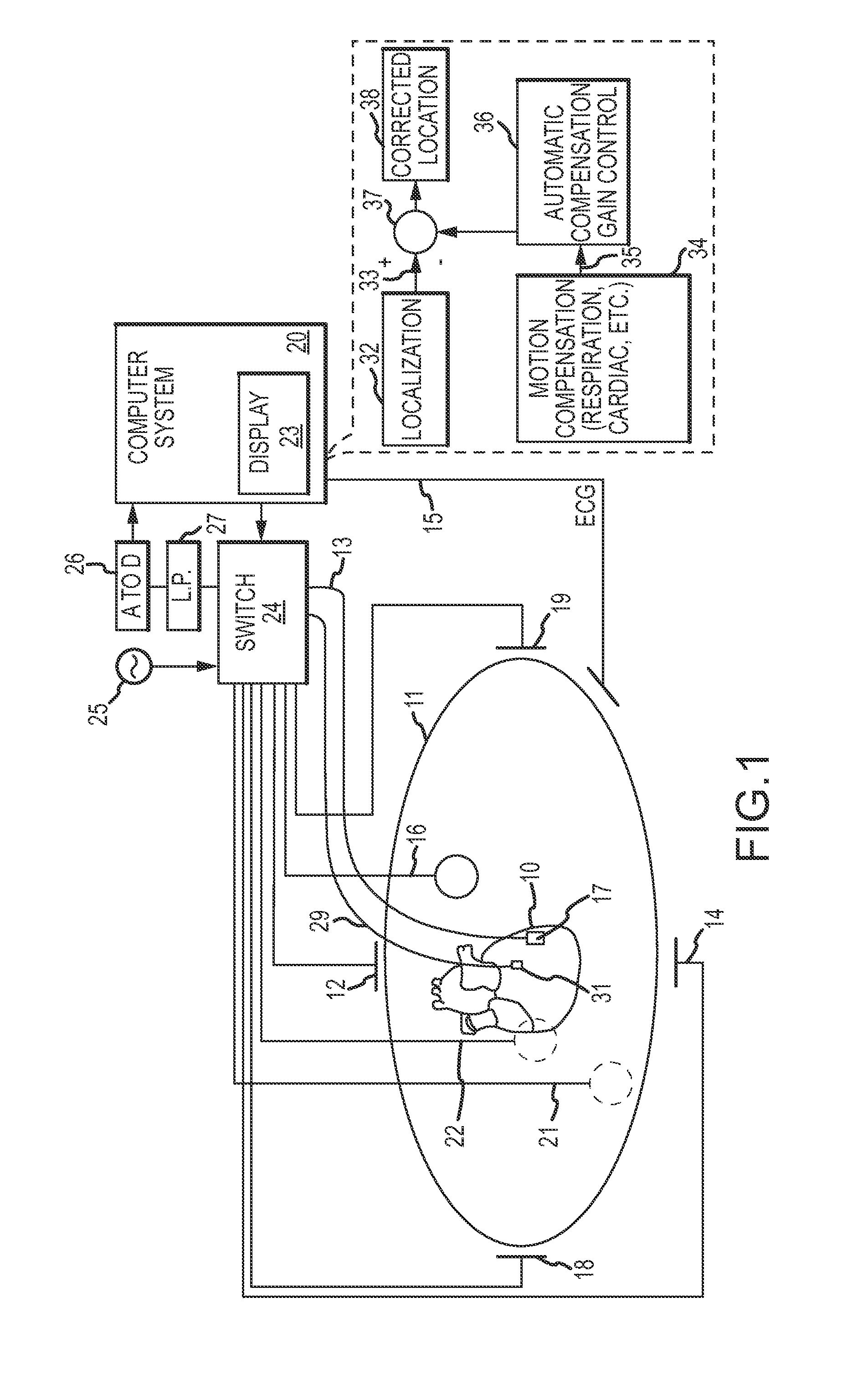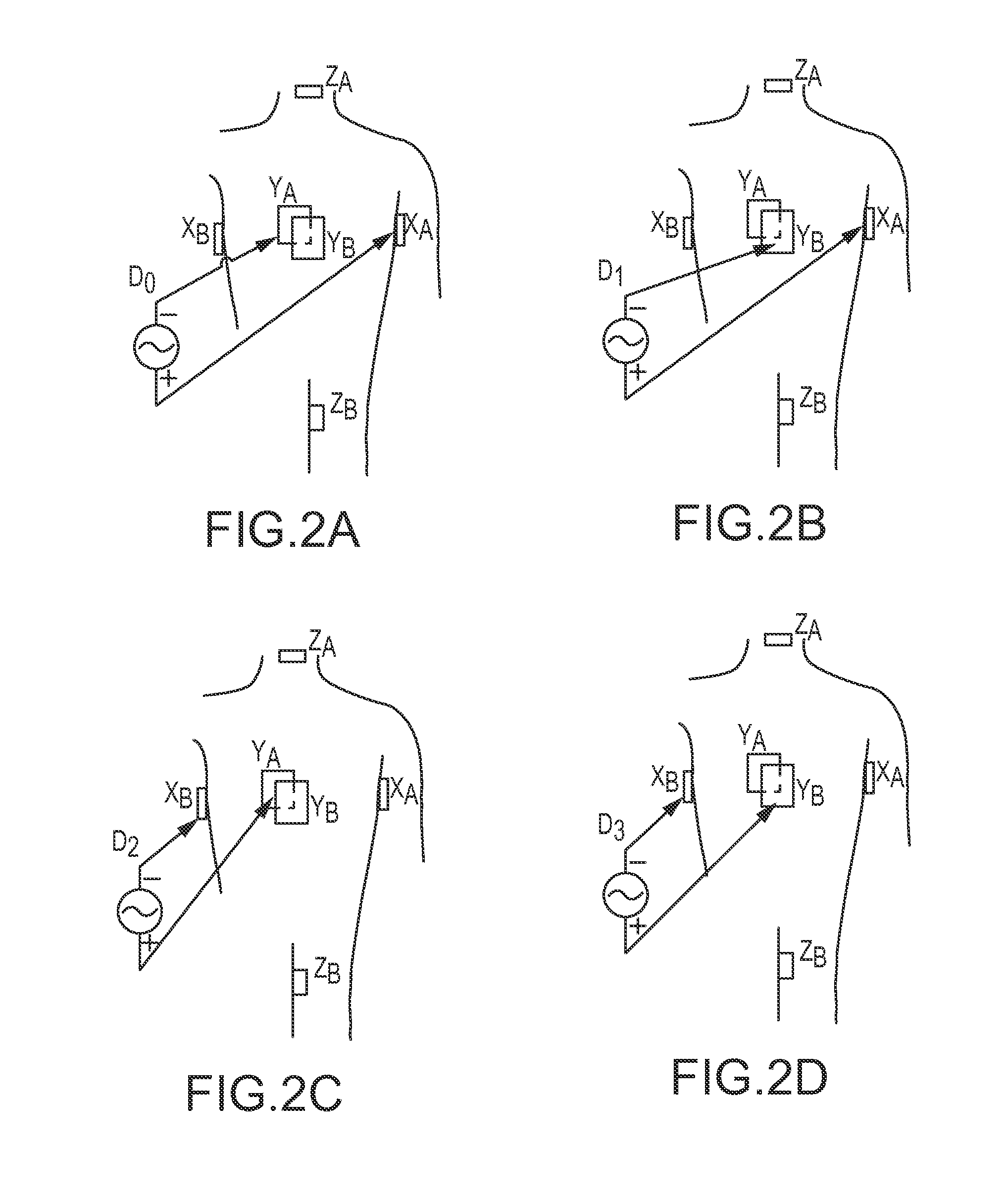Dynamic adaptive respiration compensation with automatic gain control
a technology of automatic gain control and adaptive respiration compensation, which is applied in the field of dynamic adaptive respiration compensation with automatic gain control, can solve problems such as reducing compensation signals, and achieve the effect of reducing unwanted interferen
- Summary
- Abstract
- Description
- Claims
- Application Information
AI Technical Summary
Benefits of technology
Problems solved by technology
Method used
Image
Examples
Embodiment Construction
[0035]Referring now to the drawings wherein like reference numerals are used to identify identical components in the various views, FIG. 1 is a diagrammatic overview of a catheter system in which the present invention may be practiced. The system may comprise various visualization, mapping and navigation components as known in the art, including among others, for example, an EnSite™ Electro Anatomical Mapping System commercially available from St. Jude Medical, Inc., or as seen generally by reference to U.S. Pat. No. 7,263,397 entitled “METHOD AND APPARATUS FOR CATHETER NAVIGATION AND LOCATION AND MAPPING IN THE HEART” to Hauck et al., or U.S. Patent Publication No. 2007 / 0060833 A1 to Hauck entitled METHOD OF SCALING NAVIGATION SIGNALS TO ACCOUNT FOR IMPEDANCE DRIFT IN TISSUE, both owned by the common assignee of the present invention, and both hereby incorporated by reference in their entireties. The system may be used in connection with or for various medical procedures, for examp...
PUM
 Login to View More
Login to View More Abstract
Description
Claims
Application Information
 Login to View More
Login to View More - R&D
- Intellectual Property
- Life Sciences
- Materials
- Tech Scout
- Unparalleled Data Quality
- Higher Quality Content
- 60% Fewer Hallucinations
Browse by: Latest US Patents, China's latest patents, Technical Efficacy Thesaurus, Application Domain, Technology Topic, Popular Technical Reports.
© 2025 PatSnap. All rights reserved.Legal|Privacy policy|Modern Slavery Act Transparency Statement|Sitemap|About US| Contact US: help@patsnap.com



